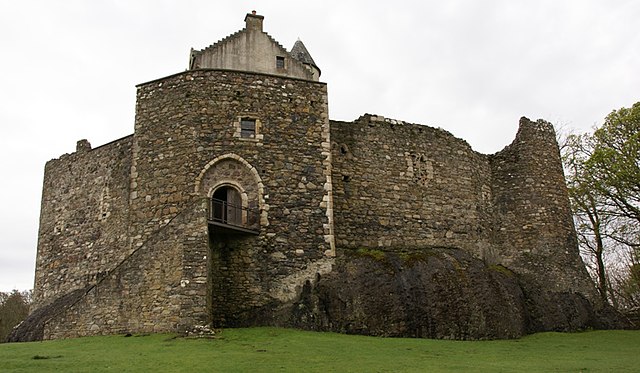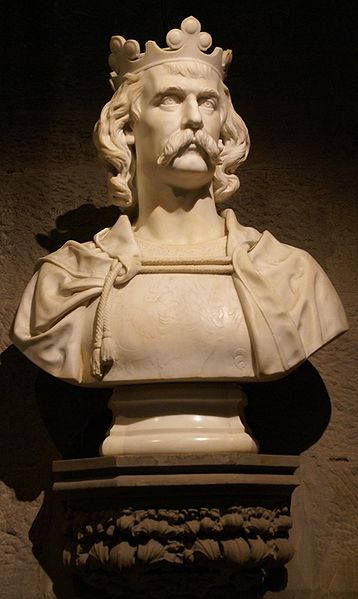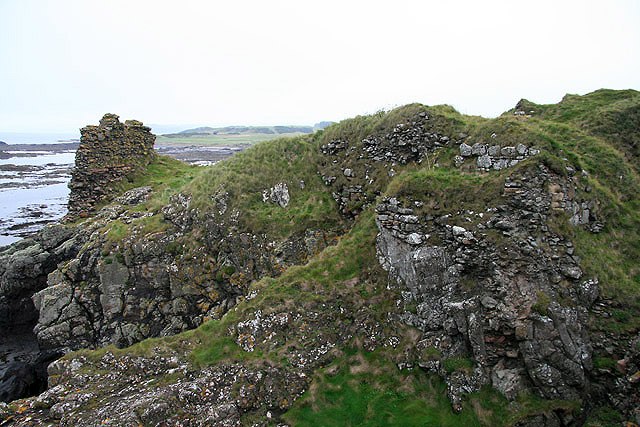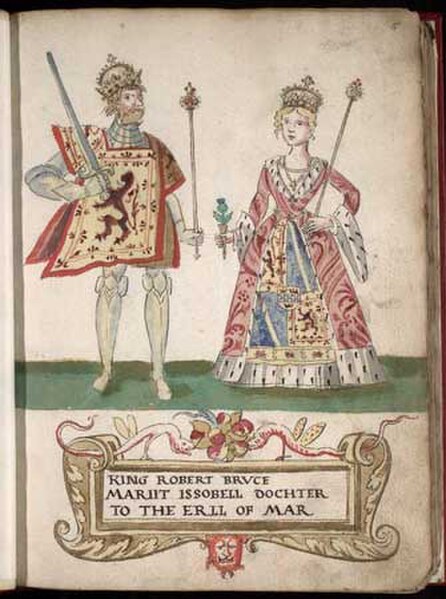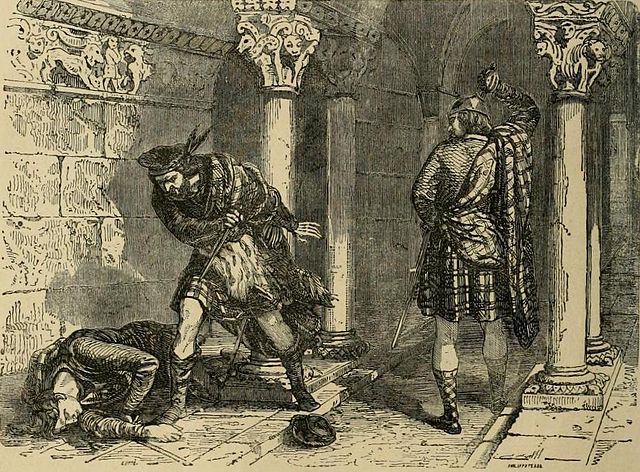Castles are buildings that combine fortifications and residence, and many were built within the borders of modern Scotland. They arrived in Scotland with the introduction of feudalism in the twelfth century. Initially these were wooden motte-and-bailey constructions, but many were replaced by stone castles with a high curtain wall. During the Wars of Independence, Robert the Bruce pursued a policy of castle slighting. In the Late Middle Ages, new castles were built, some on a grander scale as "livery and maintenance" castles that could support a large garrison. Gunpowder weaponry led to the use of gun ports, platforms to mount guns and walls adapted to resist bombardment.
Caerlaverock Castle, a moated triangular castle, first built in the thirteenth century
The Bass of Inverurie in Scotland, a large motte and bailey castle built in the mid-twelfth century
Dunstaffnage Castle, one of the oldest surviving "castles of enceinte", mostly dating from the thirteenth century
Clackmannan Tower, a tower house, originally built in the fourteenth century
Robert I, popularly known as Robert the Bruce, was King of Scots from 1306 to his death in 1329. Robert led Scotland during the First War of Scottish Independence against England. He fought successfully during his reign to restore Scotland to an independent kingdom and is regarded in Scotland as a national hero.
Neoclassic bust of Robert the Bruce at the National Wallace Monument
The remains of Turnberry Castle, Robert the Bruce's likely birthplace
Robert the Bruce and his first wife Isabella of Mar, as depicted in the 1562 Forman Armorial
The killing of John Comyn in the Greyfriars church in Dumfries, as imagined by Felix Philippoteaux, a 19th-century illustrator



